The Thinker's Garage Pondering Automotive History, Design and Culture
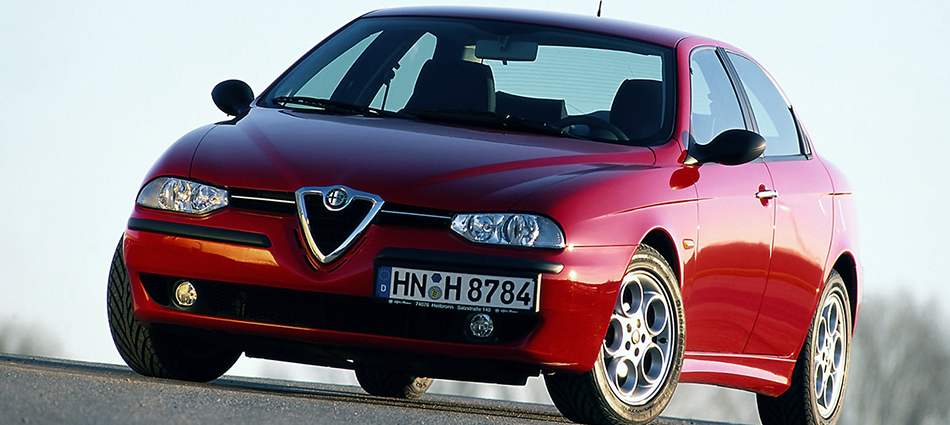
Looking back at the Alfa Romeo 156
“The Alfa Romeo 156 – my very first significant project – will always take a special place in my heart. Every time I see one, I realise it’s a masterpiece that doesn’t age” – Walter de’ Silva, 2012
When we look back upon the turn of the millennium and early 21st century, it is doubtless that Walter de’ Silva will be seen as one of car design’s most influential protagonists of that era. Having worked at Fiat and at the I.DE.A institute throughout the early 1980s, de’ Silva took a position at Alfa Romeo in 1986. By the mid 90s, he was design director there.
Alfa Romeo experienced some torrid times during De’ Silva’s early years there, and this had impacted on the company’s design component, Alfa Romeo Centro Stile. The 164 executive sedan had been outsourced to Pininfarina, and in 1987, Fiat took financial control of Alfa Romeo (indeed de’ Silva was one of the very last people hired by Alfa Romeo before Fiat took over). The first car launched under Fiat ownership was the front wheel drive 155, which replaced the rear wheel drive 75. Like the 164, the 155 was outsourced, this time to the I.DE.A institute, although its Fiat group genes were clear. The notion that the 155 was not a proper Alfa Romeo and mixed reviews prompted an extensive racing program to boost the car’s image. Development programs were reshuffled in the wake of the Fiat takeover, and the 164 flagship sedan would be 10 years old by the time it was replaced. As the middle of the 90s arrived however, Alfa seemed to be regaining momentum with the 145 and 146 hatchback and compact sedan (the first Alfa production cars credited to De’ Silva), and the Pininfarina styled GTV and Spider sports car twins, which premiered a new range of Fiat based 16 valve Twin Spark engines that eventually also found their way into the 145, 146 and 155.
155, by I.DE.A institute, had a difficult birth
It was inevitable then that a lot of attention would be focused on the 155’s replacement, both internally at Alfa Romeo and from the press. Fiat management, led by chief executive Paolo Cantarella, understood that such was the importance of Tipo 932 (as the project was known during the development phase), they pushed it past the 164’s replacement (which eventually broke cover as the 166) in the development schedule. A real statement of Alfa Romeo’s future also came in 1996 with the Nuvola concept car, a two door Gran Turismo which managed to be marry cutting edge innovation with classic Alfa Romeo iconography and values, a special blend that would characterise the marque’s new models in the coming years.
Alfa Nuvola: A sign of what was to come
“We tried to create a car that had all the personality the 155 hadn’t been able to give because it had been subjected to tough design constraints” – Mario Favilla, Alfa Romeo Advanced Design and Alfa Romeo Centro Stile Public Relations
It was late 1993 when three styling houses, Pininfarina, ItalDesign Giugiaro and Alfa Romeo’s own Centro Stile, first put forward early proposals for the Tipo 932 brief. Ultimately, it was the interpretation of the Centro Stile which got the nod, with Walter de’ Silva as head of the studio and Antonio Rosti as chief designer for the overall 932 project, while Zbigniew Maurer lead the exterior design. Meanwhile, Arcangelo Jeker, Giulio Fantin and Vincenzo Ferreri lead the design of the interior, and Simona Falcinella headed up the colour and materials aspect of the project. Although the new model would ultimately hit showrooms as the 156, within the design team the project came to be known as ‘Giulietta’, in reference to the innovative model of the same name which was a vital turning point for Alfa Romeo in the 1950s that provided much inspiration to the 156 design team, as well as other classic Alfas including the Giulia and 1900.
1950s Giulietta was a key inspiration to the 156 design team
The new car’s design was approved in 1994 and the 156 made its debut to an impressed audience at the 1997 Frankfurt Motor Show, making its 155 predecessor and many of its contemporary competitors appear instantly bland. Classic Alfa Romeo styling cues had been respectfully and playfully re-imagined, such as the ‘scudetto’, the instantly identifiable shield shaped grille, which now seemed to anchor the styling of the whole car, sitting proudly atop the ‘comet’ – the bulge that started at the base of the scudetto and continued over the bonnet. The two ‘pencil stroke’ lines on the flanks were an evolution of the full length body crease that had been an Alfa Romeo design signature for some time, and despite appearing softer and more sophisticated than the crease still managed to retain its sporty and aggressive effect while placing a subtle emphasis on the wheels. There was even a hat tip to the four round headlamps which have appeared on so many iconic Alfa Romeos in the two round reflectors nestled inside each headlamp cluster. These historical elements were skilfully combined with refreshingly modern and innovative touches such as the door handles – the fronts a beautiful piece of metalwork offering an impression of quality at first touch, while the rears were cleverly disguised as part of the glazing so as to not interrupt the rear ‘pencil stroke’ and enhance the 156’s coupe-like appearance.
“Sporty, but of refined taste, aggressive without ever slipping into excess, the balanced line of the 156 impresses and convinces at first sight” – Silva Baruffaldi, Auto & Design, Issue 106, November 1997
The interior continued the sporty past meets present theme, featuring two large dials in front of the driver for the speedometer and tachometer, with the individual clock, fuel and temperature gauges in the centre of the instrument panel. The whole instrument panel was aggressively angled towards the driver. Leather trim, Recaro sports seats and wooden rimmed steering wheels and gear knobs were available options to further change the feel of the interior.
Mechanically, the starting point for the new car would be Fiat’s Tipo 3 platform as found in various Fiat group products including the 155, but when the 156 debuted it was almost bespoke, featuring major revisions including unique dimensions as well as new suspension with a double wishbone arrangement at the front and a 164 derived Macpherson strut system for the rear. Six engine variants were offered, the petrol four cylinder, 16 valve ‘Twin Spark’ motor in 1.6, 1.8 and 2.0 capacities, an updated 24 valve version of Alfa’s 2.5 litre V6 petrol engine and two direct injection turbo diesel power plants, a four cylinder of 1.9 litre capacity, and a 2.4 litre five cylinder. Gearboxes at launch were manual only, 5 speed on 4 cylinder petrol and diesel variants, 6 speed for the 2.5 V6.
“We were lucky enough to have a dedicated chassis. Only the central floor section is shared with the Fiat Marea, but even that is modified…” – Antonio Rosti, Chief Designer Tipo 932
These were soon joined however by two alternative gearboxes. The Q-system automatic became an option in the 2.5 V6. This gearbox was mechanically a traditional sports automatic with a torque converter, but the gear selector featured a manual style H-pattern shifter, allowing drivers to choose between the gearbox’s four speeds. Of more fame (or infamy) was the Selespeed gearbox that became an option on the 2.0 Twin Spark. Using the same 5 speed gearbox as the manual version, the Selespeed replaced the traditional clutch pedal with a computer controlled, hydraulically actuated clutch. Selespeed offered drivers a number of gear shifting choices; they could shift manually using the sequential style gear shifter or buttons on the steering wheel, or they could press the ‘city’ button near the shifter, and the car would change gears automatically.
Response was very positive. The 156 won a number of awards including 1998 European Car of the Year, and by the year 2000, over 250,000 examples had been produced.
With the successful 1997 launch of the 156 out of the way, Alfa Romeo turned its attention to expanding the range by adding a more versatile estate model to the 156 range. The 156 Sportwagon made its debut in March 2000 at the Geneva motor show. Naturally, Alfa Romeo Centro Stile handled the design, although consultation was sought in the early stages from Bertone and I.DE.A institute. During this period, Walter de’ Silva and Wolfgang Egger moved to SEAT and commenced their careers at Volkswagen Group, while Andreas Zapatinas took over the role of head of the Centro Stile. In contrast to other estate cars of the era, style and sportiness were high on Alfa Romeo’s agenda. The C pillar was steeply raked, and the roofline was coupe-like in its long, gentle curve towards the rear of the car. So minimise the effect of this on the tailgate opening, the tailgate hinges were pushed away from the rear glass, meaning the tailgate opening encompassed the trailing edge of the roof.
The 156 Sportwagon made its debut in March 2000 at the Geneva motor show, available with the same six engine options as the sedan. It was also available with Sachs-Boge ‘Nivomat’ self levelling rear suspension system to improve handling while carrying heavy loads, although due to the svelte roofline usable cargo space with the seats in place was not massively improved over the sedan. Unlike the sedan however, the rear seats could fold for extra luggage carrying ability.
The range was topped in November 2001 with the debut of the 156 GTA. With a name linking it to the iconic Giulia Sprint GTA (Gran Turismo Alleggerita), the homologation special which provided Alfa a springboard for significant racing success in the 1960s, the 156 GTA featured a 3.2 litre, 250hp version of the 24 valve V6, reworked suspension, larger brakes, unique sports seats and subtle but significant body changes including special wheels, wider wheel arches, side skirts, new, more aggressive front and rear bumpers and black headlamp surrounds. The GTA was produced as both a sedan and wagon, and was available with six speed manual and six speed Selespeed transmissions. GTA production continued until the 156 sedan ceased production in 2005, however this model never received the Giugiaro facelift which appeared on rest of the range in 2003.
Performance Flagship: 156 GTA
As well as being the fastest, rarest (production totalled only 4651 units worldwide), and most expensive 156, the GTA’s most notable feature, its 3.2 litre V6, is considered by many to be one of the great mass production engines, with exciting power delivery and a fantastic soundtrack. This combination has gained the 156 GTA a cult following amongst passionate Alfisti who regard it as one of the ultimate ‘modern’ Alfa Romeos, and values of 156 GTAs today continue to reflect this.
Alfa Romeo 156 GTA Worldwide Production Figures:
156 GTA Sedan 2625
156 GTA Selespeed 348
156 GTA Sportwagon 1174
156 GTA Sportwagon Selespeed 504
Total 4651
The 156’s first notable update came in early 2002, aligning the rest of the range with the recently premiered GTA. Externally the changes were minor – colour coded mirrors and bumper strips – but internally these cars featured a lot of the changes first shown on the GTA. The revised interior featured an updated steering wheel and instrument panel with a more modern presentation, higher quality materials, dual zone climate control and a dash mounted information screen. At this time, the 2.0 Twin Spark engine was replaced by the 2.0 JTS with direct fuel injection. While the 5 speed manual and Selespeed options found on the 2.0 Twin Spark were carried over to the JTS, the steering wheel button gearshift of the earlier Selespeed models was replaced by paddles mounted behind the steering wheel.
Little changed externally, but the interior was revamped
Safety was also improved, with window airbags, anti slip regulation (traction control) and vehicle dynamic control (electronic stability control) becoming standard across the range. These cars were produced for a relatively short period however, as in 2003 a more major facelift occurred.
Brera Concept impressed Alfa management and directly influenced 156 restyling
Impressed by Giorgetto Giugiaro’s Alfa Brera Concept, Alfa Romeo’s management engaged his company ItalDesign Giugiaro to carry out the 156’s restyling. Wolfgang Egger had returned from SEAT to the Centro Stile and oversaw the overall project and interior. The update featured a new look front and rear which changed the demeanour of the car, bringing it into line with the Brera influenced family look Alfa was adopting and making it a much more aggressive looking vehicle overall. The bodywork changes were extensive, the bonnet and bootlids (raised slightly on the sedan to improve aerodynamics, and reshaped on the Sportwagon to increase load capacity), as well as the front and rear lights, bumpers, and quarter panels were remodelled, with updated materials inside and out while new colour, trim and wheel options offered to suit. The scudetto now extended right to the bottom of the front bumper, while new grilles and more aggressively shaped headlamp clusters completed the look. These changes aligned the 156 with not only the Brera Concept car but also Alfa’s already launched 147 hatchback and GT Coupe.
Sedan and Sportwagon received the facelift simultaneously
“It is not easy to revise the architecture of a hugely successful car. It was a real challenge…” – Giorgetto Giugiaro, 2003
“With the 156 restyling, they (…) lengthened the nose too much, transforming it into a tapir” – Walter De’ Silva, 2005
There were specification changes too; a new trim level made its debut, the Turismo Internazionale or TI, which was intended as a sporty model to fit below the GTA and featured sports suspension and 17 inch alloy wheels with a unique design. Inside, there were sports seats in black with red stitching alongside black trim and roof lining material. The diesel engines in the range were also updated with an improved direct injection system and four valves per cylinder, these engines dubbed the M-Jet 1.9 16v (now with a 6 speed gearbox) and the 2.4 20v respectively.
The final interpretations of the 156 to make their debut were the Q4 wagon variants, which premiered in 2004. Featuring a Torsen all wheel drive system, these were only available with the 1.9 M-Jet engine and in left hand drive. There were two versions available, the Sportwagon Q4 which was otherwise similar to the two wheel drive Sportwagon, and the Crosswagon Q4, which followed the trend set by vehicles such as the Volvo XC70 and Audi Allroad for car based SUV ‘crossover’ vehicles. The Crosswagon Q4’s all wheel drive system and higher ride height was complemented by the addition of rugged looking body cladding and aluminium protection to the 156 Sportwagon bodywork. Over three years of production, Alfa Romeo built 7032 156 Crosswagon Q4s, its volume limited by the lack of engine options and availability in left hand drive markets only.
Q4 Crosswagon featured extra body protection, higher ride height.
The 156’s successor, the 159, made its debut at the 2005 Geneva motor show, signalling the imminent end of 156 production. Like the 156 restyling, the 159 was designed by Giugiaro and it aesthetically continued the family lineage established by the 156 while carrying obvious influence from the Brera which had impressed Alfa management so. The last 156 sedans rolled off the production line in 2005, however the Q4 Crosswagon remained in production until 2007 due to special niche it occupied in the range. In total, 651,156 Alfa Romeos 156s were produced over a decade, making it one of Alfa’s most successful models ever, in terms of sales volume, influence and critical appreciation.
159 design carried on the family look
Alumni from the 156 project have gone on to enjoy prolonged influence in the Automotive industry. Both Walter de’ Silva and Wolfgang Egger moved to SEAT in the years following the 156’s launch, and went on to make their mark within Volkswagen Group. While de’ Silva rose to eventually head all of Volkswagen Group’s design activities and his protégé Egger returned for a spell at FIAT before moving back to become head of Audi Group Design, and in 2013 he took a senior role at ItalDesign Giugiaro. Simona Falcinella is also now at the Volkswagen Group, as Head of Design Colour & Trim at Audi. Andreas Zapatinas moved to Subaru in the mid 2000s and oversaw a series of concept cars, as well as the R2, B9 Tribeca and an Impreza facelift, although his employment there reportedly ended unceremoniously in 2006, while a number of people, including Mario Favilla, Zbigniew Maurer and Antonio Rosti remain at Alfa Romeo.
by Andrew Marshall
Sources
Felicioli, Riccardo P (1998), Walter de’Silva Centro Stile Alfa Romeo, Milano: Automobilia
Lenaerts, Bart & De Mol, Lies (2012), Masters of Modern Car Design, Belgium: Waft
Baruffaldi, Silvia (1997), The Spirit of Alfa Style, Auto & Design Magazine, Issue 106, pp21-28
Perini, Giancarlo (1997), Comeback of the Sport Sedan, 1997 Issue 11, pp35-39
Cornil, Daniele (2000), Volumes in Harmony, Auto & Design Magazine, Issue 121, pp23-28
Gandini, Marzia (2003), In the wake of the Brera, Auto & Design Magazine, Issue 141 pp58-61
Alfa Romeo 156 press book (1997), Milano: Alfa Romeo
Alfa Romeo Press, Sportwagon – Thirty months of success for the Alfa 156, 03/2000
Alfa Romeo Press, Alfa Romeo at the 59th Frankfurt International Motor Show, 11/2001
Alfa Romeo Press, New Alfa Romeo 156 & 156 GTA, 01/2002
Alfa Romeo Press, New Alfa Romeo 156 & Sportwagon, 06/2003
Automotive News (2005), De’ Silva to rivals: Keep it simple, Retrieved from http://www.autonews.com/article/20050221/SUB/502210801/0/SEARCH
Production figures thanks to Marco Fazio at Alfa Romeo Centro Documentazione
April 4, 2014 | Filed under Gallery and tagged with 145, 146, 155, 156, 164, Alfa Romeo, Andreas Zapatinas, Antonio Rosti, Arcangelo Jeker, Audi, Brera, Crosswagon, Giorgetto Giugiaro, Giugiaro, Giulio Fantin, GTA, I.DE.A Institute, ItalDesign, Nuvola, SEAT, Simona Falcinella, Sportwagon, Subaru, Vincenzo Ferreri, Volkswgen, Walter De Silva, Wolfgang Egger, Zbigniew Maurer.
Tags: 145, 146, 155, 156, 164, Alfa Romeo, Andreas Zapatinas, Antonio Rosti, Arcangelo Jeker, Audi, Brera, Crosswagon, Giorgetto Giugiaro, Giugiaro, Giulio Fantin, GTA, I.DE.A Institute, ItalDesign, Nuvola, SEAT, Simona Falcinella, Sportwagon, Subaru, Vincenzo Ferreri, Volkswgen, Walter De Silva, Wolfgang Egger, Zbigniew Maurer
4 Responses to Looking back at the Alfa Romeo 156
Leave a Reply Cancel reply
Powered by WordPress using the F8 Lite Theme
subscribe to posts or subscribe to comments
All content © 2025 by The Thinker's Garage
Log in

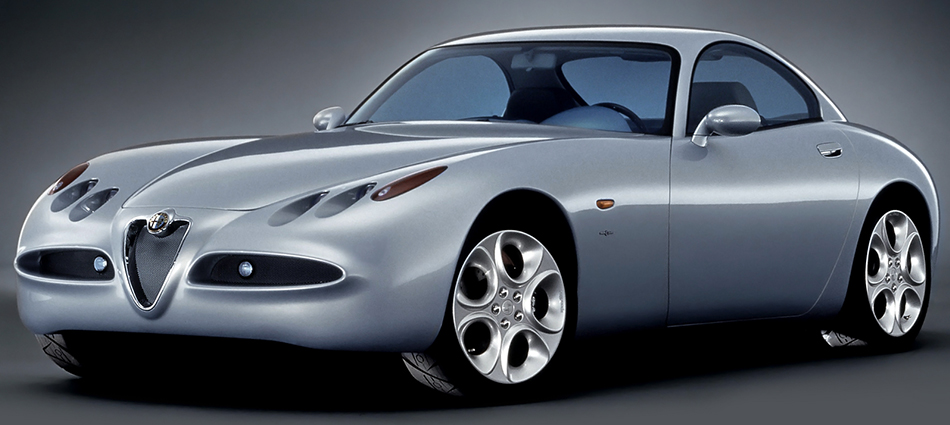
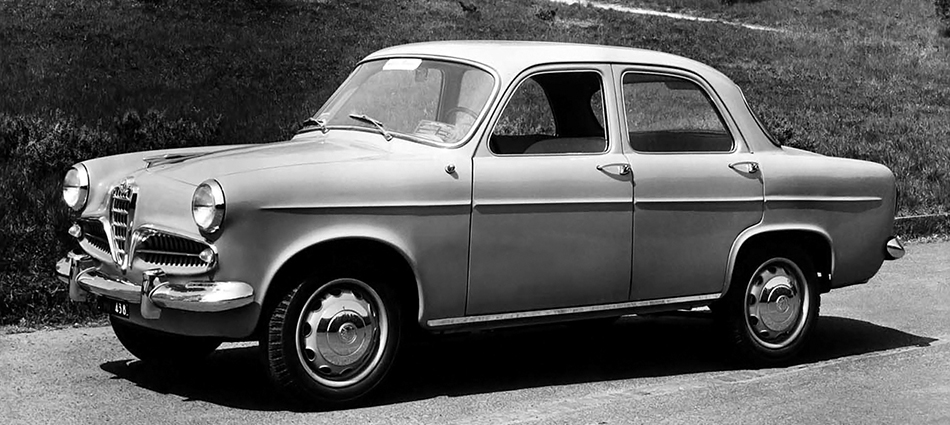
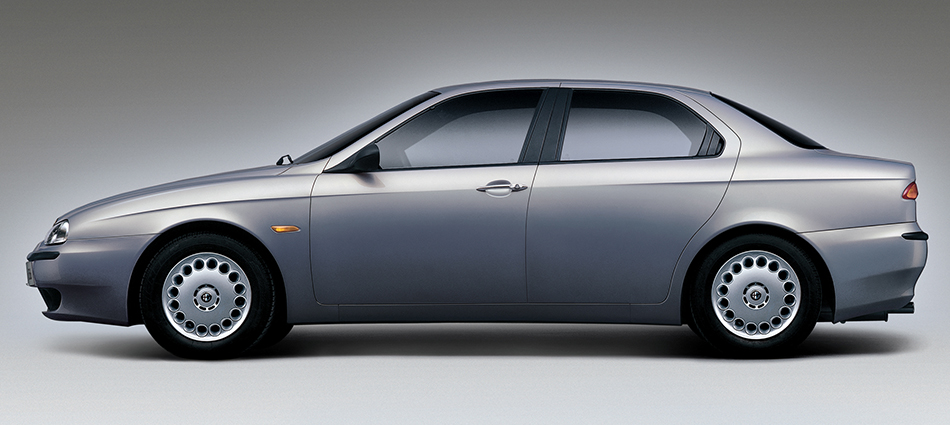
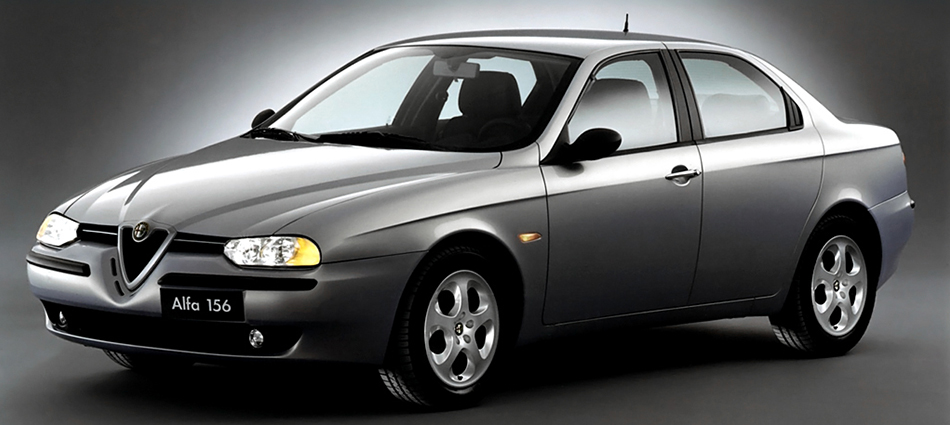
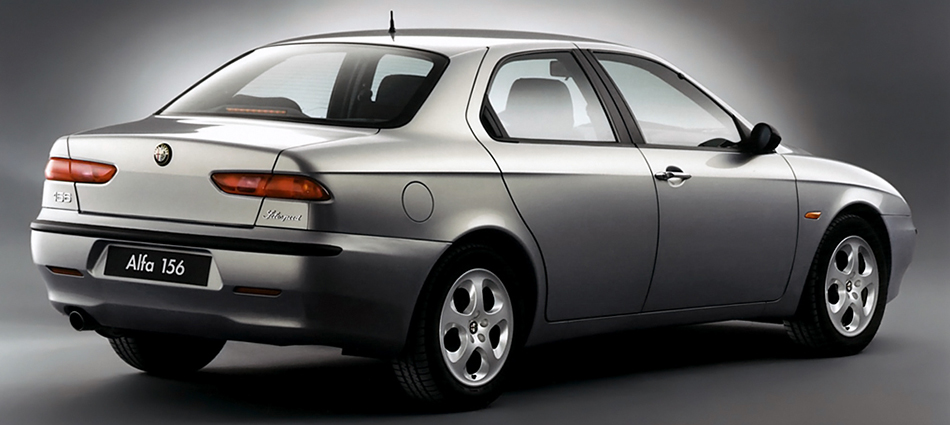
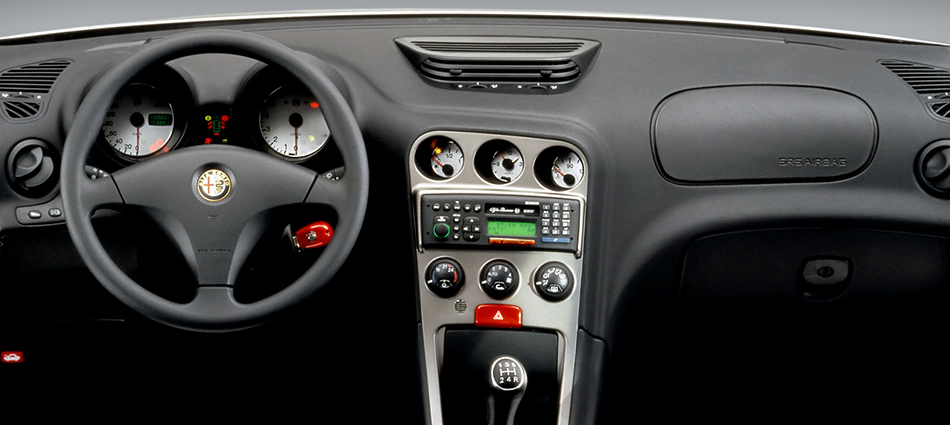
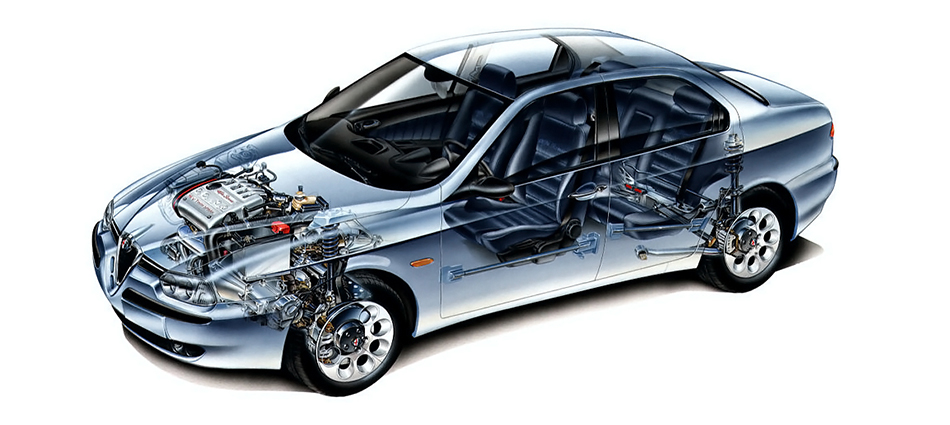
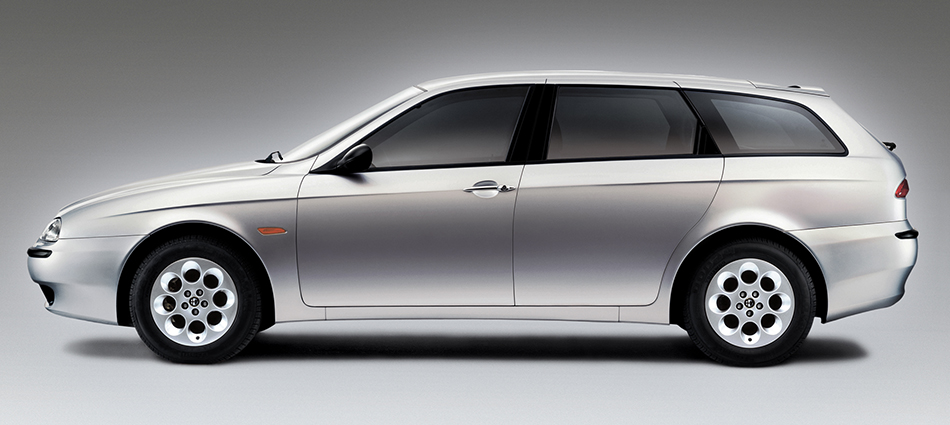
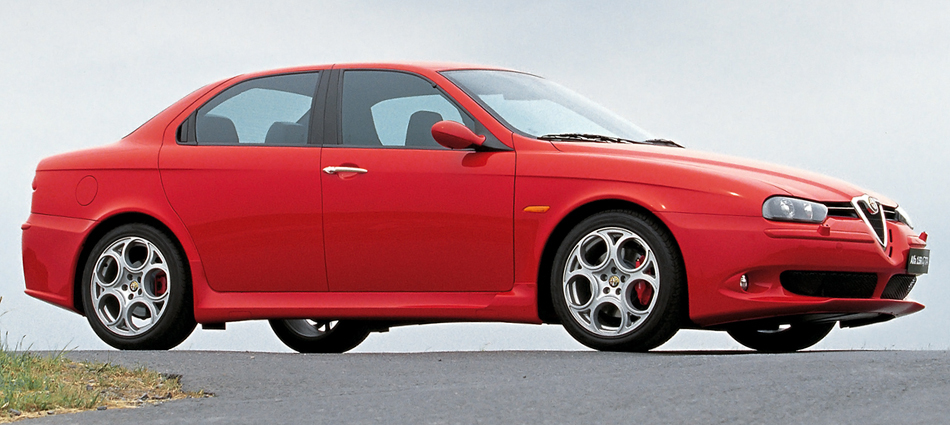
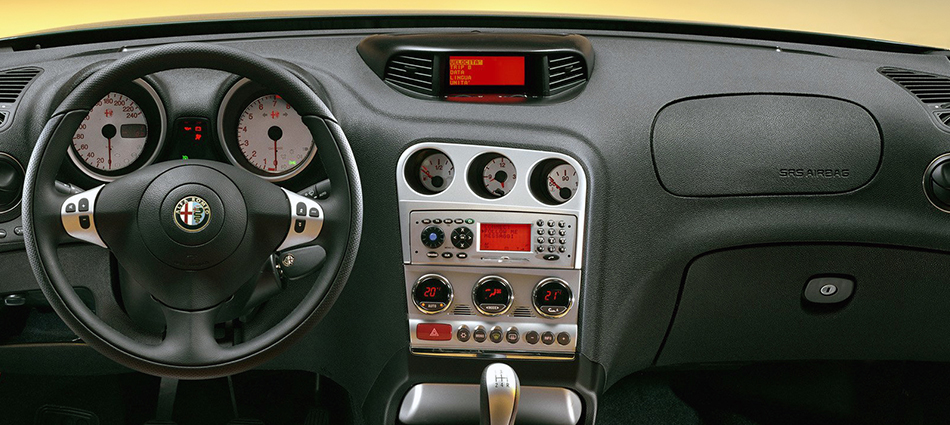

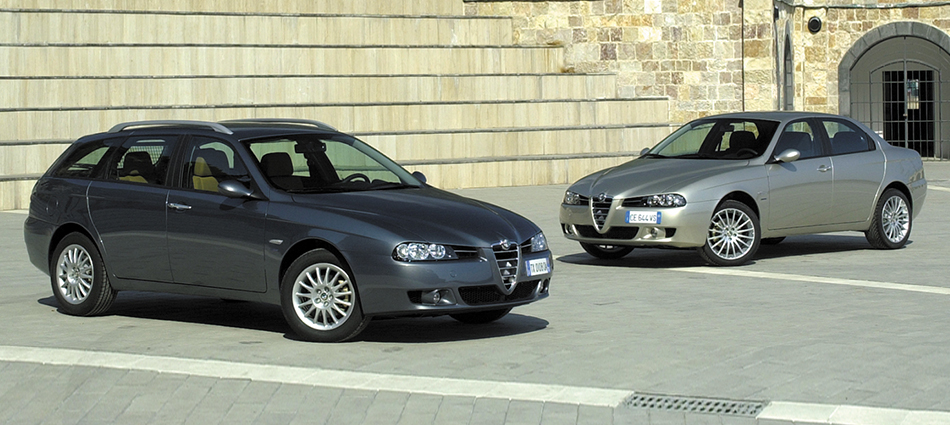
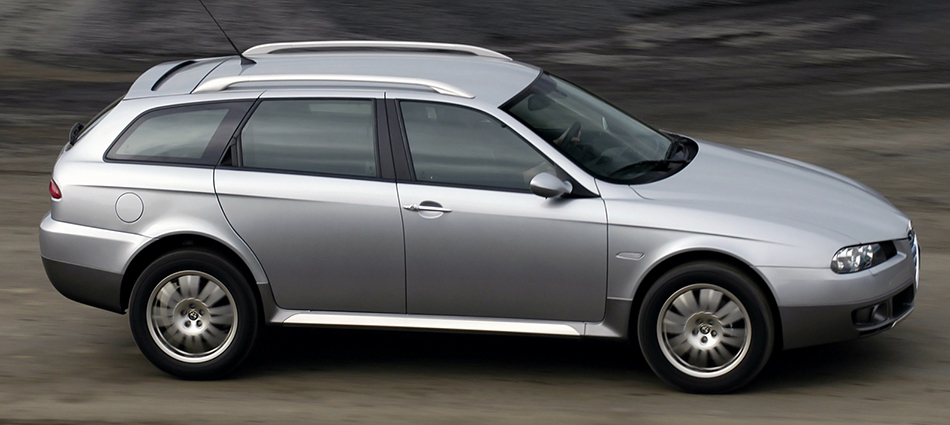

Awesome write up dude. Really informative. My favourite line of the car is the profile ‘pencil’ line that blends into the front door handle.
Whats cool is in the first interior picture thats the development key! Bosch Australia designed and work on them with Valeo france. I have a whole heap of prototypes but they never went with that shape 🙂
I had no idea the 156 was such big deal back then. Amazing.
Keep up the great work.
OG
Great informative web site! Actually i have still owned Alfa 156 since 2002. It was imported into Japan via Germany. The engine is 2.0 TwinSpark, left steering wheel, leather sheet with sportiva options.
Alfa 156 is the best car ever, personally. 🙂
Was only going to have the 156 2.0 twincam for a year and sell as i thought it would rust and be a car you need to fettle regularly. But i was wrong when i sold this fantastic raspy little motor 8 years later it was rust free and cost the same to own as my decades of vw audi cars.
bought a 159 ti black but miss that twinspark rasp sound and fun to this day.
156 twinny a legend. Looks nice too.
Brilliant write up and much appreciated! I joined the 156 admirers club after “accidentally” purchasing a late 05 Monza Black 156 JTS facelift sedan with Selespeed, the Eibach lowered suspension option, factory skirts, and red leather interior. Bought it for a song at online auction. Despite having the usual JTS issues (eventual big end bearing fail and missing cam lobes) requiring us to swap in another motor it brings a smile to my face every day I drive it. What blows me away the most is it’s handling abilities, particularly for a front wheel drive car.
About 2 months ago we rescued another black 01 156 (pre facelift) with the TS motor and selespeed. This cost all of $350 with a blown motor (cam drive on crank came loose and caused timing to shift smashing all valves). About $1000 later with another motor and a tidy up, my son now has his own black 156 as his first car. This one appears to be an Australian only “special” featuring Pirelli Edition stickers, 17″ spoked alloys, Recaro front seats and little cloverleaf badges everywhere.
It saddens me a little that there are so many good looking 156’s being wrecked now as owners find them too difficult to maintain and values have dropped such that they fall into the hands of those not able to care for them. It seems we have our own rescue service running here for 156’s!
Next to find me a nice GTA to take out on weekends.